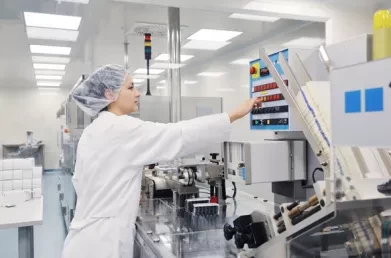Production Scheduling challenges for food and beverage manufacturers
Demand management is a significant challenge for food and beverage manufacturers. Making product to stock is not always a viable option where you have short shelf-life. Some companies will primarily use forecasts to drive the production plan as customer orders may not be received until the very last minute, i.e., production of the products may have already started before orders are received. Demand can be affected by seasonal and other factors such as weather and sales promotions. A further complication occurs when you have a large number of products which may only be produced in small production runs. This may not be the most economical way to produce them but you may have no other choice. Because food and beverage production often runs 24 hours a day and 7 days per week, changes to demand which occur outside of normal business hours can also present a challenge to the demand and production scheduling teams.
Demand is used to drive the creation of a production schedule, and is verified and agreed though a Sales and Operations Planning (S&OP) process. There are a number of best of breed solutions available to help forecast demand.
Food and beverage manufacturers face many scheduling challenges:
- Storage and consumption of ingredients which have expiry dates means that they must be consumed within a specific period of time so as not to adversely affect the quality, the quantity, or the remaining shelf-life of the ingredients or the end-product.
- Management of microbiological hazards at different points in the production process means that the production resources, the environment, and changeovers must be managed closely to ensure compliance.
- Management of minimum and maximum wait times in between operations, e.g., specific cooking and cooling times for products.
- Changeover management from one product to another on a line may require that production resources have to be cleaned-down before another product is produced on a line.
- Line clearances.
- Identification and management of bottleneck production resources which constrain production capacity.
- Scheduling of planned preventive maintenance.
- Availability of reusable assets such as pallets, dolavs, and baskets may affect or stop production.
- Scheduling to meet distribution requirements and specific dispatch times, e.g., you may have multiple dispatches per day to meet specific customer delivery times.
Sometimes, there is naïve expectancy of what an ERP system can do for companies in terms of production scheduling. The generic, pre-existing production scheduling modules of some ERP systems can disappoint.
The core planning and decision making process is often found on a range of increasingly complex, ‘home brewed’ Excel-based workbooks, maintained by individuals. If that individual leaves the business, then this is a strategic risk. Less often, in the absence of a workbook, there may be a series of manual processes, meetings and decisions, and the output from these activities are then fed back into the ERP system, or the outputs of the ERP system are manually modified to reflect the agreed plan.
Consider the many business, production operations and supply chain rules, production processes and constraints, etc. that can and do exist for any single production operation. Multiply this by variations and complexities within and across industry sectors, and it’s hardly surprising that there is not a ‘one size fits all’ scheduling software solution that meets everybody’s needs.
As your company grows and as any available production capacity is consumed, best of breed Advanced Scheduling tools may be required to provide capable-to-promise and what-if scenario capabilities to meet demand and manage customer expectations. Advanced Scheduling tools will typically use Finite Scheduling to produce feasible schedules. Replacing your in-house developed planning and scheduling solutions with best of breed solutions should provide the required functionality to deal with the complexities of your business and production processes and will mitigate the risk of relying on solutions which are not robust enough for a growing business or are dependent on individuals to develop and maintain.
This blog was written by Justin May, Principal Consultant at Lumenia. For further information on Lumenia or on Demand Planning & Production Scheduling please send an email to Justin May.


